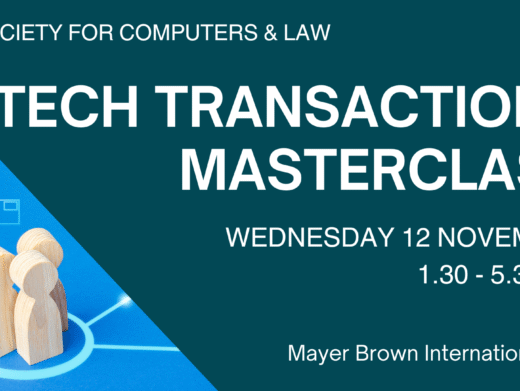It is now almost two years since the European Commission
proposed a new ‘European Electronic Communications Code’, which would amend and
consolidate the current regime (dating from 2002). (This is not to be confused
with the (UK-only) Electronic Communications Code, which was inserted by the
Digital Economy Act 2017, sch 1 and is the Communications Act 2003, sch 3A.)
On 29 June 2018 a new,
amended, draft of the Commission’s Code was published. This is expected to go to
a final vote in the Autumn of this year.
The Code will, when finalised, repeal the existing 2002
Directives and replace them with a single, consolidated text, for
implementation in Member States within two years. Having spent some time
reading through the (c. 450) pages, the main changes or issues appear to me to
be as follows.
- High Capacity Networks. A new objective (Article 3.2(a)) –
promoting access to, and take-up of, very high capacity connectivity for both
fixed and mobile networks – is added to regulators’ existing general objectives
(which relate to matters such as the promotion of competition and the
development of the single market. - Definition of ‘Electronic Communication Service’. This
key term has been re-defined (Article 2) to refer to an ‘internet access
service’, an ‘interpersonal communications service’ and a transmission service
(such as for machine-to-machine communications or for broadcasting) but, as at
present, content services are excluded. The most important new term here is ‘interpersonal
communications service’ – this means any service that allows direct
communications over an electronic communications network between finite numbers
of people – a definition which would catch conventional telephony services as
well as ‘over the top’ services like Skype or WhatsApp. The category is further
sub-divided into ‘number-based’ and ‘number-independent’ interpersonal
communications services, depending on whether or not conventional telephone
numbering is used. The result is that number-based services should get the same
regulatory treatment irrespective of whether or not they work ‘over the top’ of
separate internet connections. - General Authorisations – Notification. Whereas the original
intention was to allow electronic communication service providers to make a
single pan-European notification (to BEREC, the pan-European regulatory body)
the latest text instead suggests, as at present, that Member States may require
service providers (other than number-independent communications services) to
lodge a notification with the domestic regulator – but (at Article 12.4) there
will now be much greater harmonisation around the information that may be
requested for any such notification. This should be a significant improvement
on the present system, which can be much more onerous in some countries than in
others. This also preserves the ability of a Member State to decide not to
require any notification at all (though only the UK, historically, has taken
advantage of this ability). - Small-Area Wireless Access Points. Article 56 operates to
prevent ‘competent authorities’ (which would include, for example, local
authorities) from making the deployment of small area wireless access points
subject to any individual permits. Moreover Member States must ensure that
local and national authorities offer access to operators to street furniture
(like lampposts and street signs) for the installation of wireless access
points on fair, reasonable and non-discriminatory terms, with a single point of
contact. These measures are designed to make it significantly cheaper, and
easier, to install the infrastructure needed to build and improve networks,
especially the forthcoming 5G networks. - Market Reviews. Under the Code (Article 65.5) National
Regulatory Authorities (NRAs) will be able to wait five years, not three (as at
present) in between market reviews and determinations of significant market
power (SMP) and remedies. This may seem like a minor change but it ought to go
some way towards assisting with the near-continuous market review process that
occurs at present. NRAs will also have (Article 70) a specific power to oblige
operators with significant market power to offer access to their civil
infrastructure, like towers and ducts. - Access to Facilities. Article 59 includes a clear power on
NRAs, irrespective of any market review and significant market power
designation on operators, to impose an obligation to grant access to wiring and
cables from the ‘first concentration or distribution point’. This is intended
to apply, for example, to connection points in multi-story, multi-tenant buildings
and, significantly, could apply to the owners of the wires or cables even if
they are not themselves providing electronic communication services. - Co-Investment. Under Article 74, where an operator with significant
market power enters into a co-investment arrangement with a competitor in
respect of a plan to build fibre to the premises (for fixed networks) or base
station (for mobile ones) then in some cases the newly-built assets may be
exempt from access remedies that would otherwise have applied as a consequence
of the significant market power status. Any such arrangement must offer genuine
risk-sharing on a co-ownership model and there are various other conditions
which must apply too. Specifically the programme must be open at any point in
its lifetime to other service providers to join (though the price they pay may
reflect the differing levels of risk applicable at different times). It must
also facilitate downstream competition and access-seekers who do not
participate must still be able to access the same set of services as were
available to them before the investment, adapting over time to improving levels
of service and quality. These (complex) provisions are perhaps the most
controversial change from the current regime, since they effectively give a ‘regulatory
holiday’ to certain types of infrastructure which may be built by the incumbent
(albeit in co-operation with one other party). Critics argue that this may be
counter-productive, and that the old regime, under which significant market
power operators must provide access to their network infrastructure at a price
that reflects all their costs, including the cost of capital and the risk being
taken, should be sufficient. - Wholesale-only Networks. Under Article 77, if NRAs conclude
that a significant market power operator is operating on a wholesale-only basis
then a light-touch form of regulation will apply such that NRAs may only impose
obligations in relation to access to civil engineering (Article 70) or
non-discrimination (Article 68). Other remedies (such as transparency,
accounting separation or cost orientation) will not apply though an obligation
to charge ‘fair and reasonable pricing’ may also be imposed. - Functional Separation. Articles 75 and 76 deal, for the first
time at a European level, with the possibility of imposing functional
separation on a significant market power operator if the remedies imposed
following a market review process have not succeeded in achieving competition,
and with the possibility that a significant market power operator may choose to
separate itself (in which case legally binding ‘commitments’ will apply). - Voice Termination and intra EU calls. Article 73 obliges the
Commission, on advice from BEREC, to set single maximum voice call termination
rates for fixed and for mobile networks. This will replace the current system
whereby termination rates can vary between countries, sometimes quite
significantly. Article 113a (amending the Open Internet Regulation) also adds a
maximum retail charge for intra-EU calls (€0.19/minute) and SMS messages
(€0.06). - Spectrum. The Code introduces further harmonisation measures
for spectrum (eg at Article 4.3 and at Article 35). These include promoting
shared use of spectrum and co-ordinating spectrum assignments. The consistency
of the spectrum assignment process is to be safeguarded through a process
involving BEREC scrutiny of NRA’s planned spectrum measures. - Universal Service. The Code updates the rules around
Universal Service. The current references to payphones and telephone
directories have been removed and replaced with an obligation to ensure that
all consumers have ‘adequate broadband’ and voice communication services
available at a fixed location (Article 79). ‘Adequate broadband’ is to be
judged, taking into account BEREC reports, as the bandwith ‘necessary for
social and economic participation in society’. This means the minimum needed to
support services (set out in Annex V) such as email, internet banking, standard
quality video calls and social media. The net costs of this universal service
are to be paid for either through general taxpayer funds or else through a
specific levy on electronic communications networks and service providers
(Article 85).
Mike Conradi is a Partner at DLA Piper LLP, with a focus on
providing commercial and regulatory advice to businesses in the telecoms
sector.




